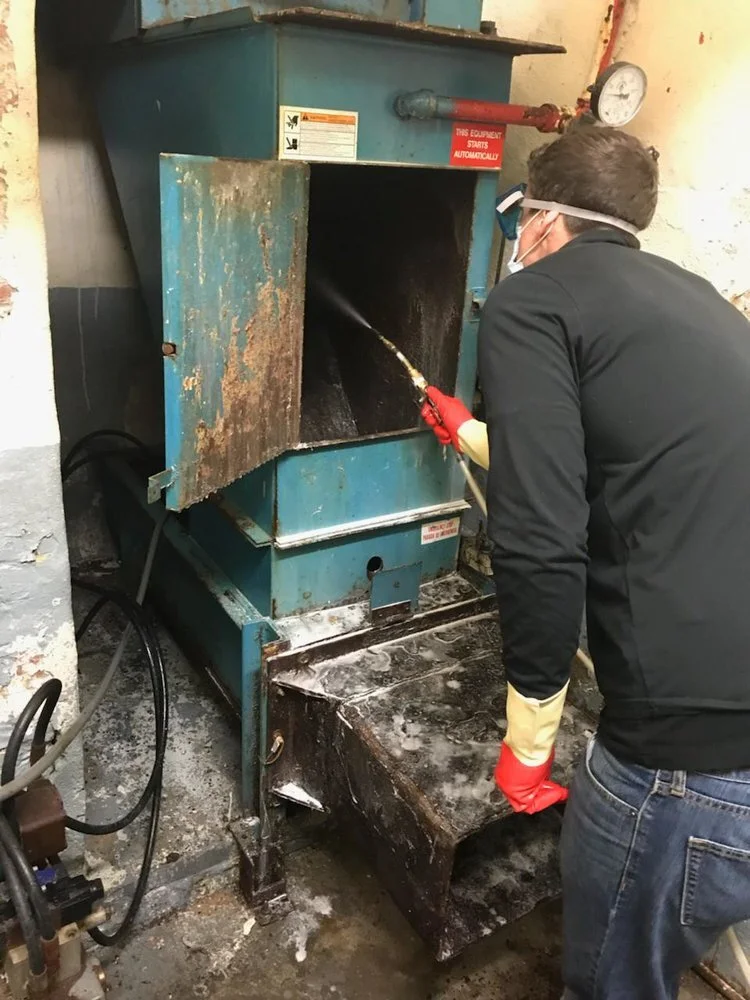Our Services:
Integrated Pest Management:
Integrated Pest Management (IPM) is a prevention-based pest management method that provides long-lasting pest control, improves building conditions and is less harmful to residents and pets than traditional pest control.
Whereas traditional pest control relies on regularly scheduled pesticide applications, IPM targets the underlying causes of pest infestations through simple pest proofing strategies such as fixing leaks and holes and managing garbage to deprive pests of food, water, shelter and ways to get around. If pesticides must be used, IPM uses the least toxic chemicals, applied in the safest manner to protect people and pets.
Using IPM in your building can provide long-term effective pest control, prevent pest-related damage to buildings, improve building and air quality and reduce resident complaints. It is also consistent with good building management and can save time and money in the long run.
Initial Inspection & Report :
During the initial inspection, Attack Exterminating Company LLC will look for evidence of pests and identify problem areas and building conditions or practices that support pests. Attack Exterminating will inspect the interior of the building, including apartments with reported pests, garbage storage areas and other common areas, as well as the exterior areas of the buildings. We will provide a written report of the inspection findings and recommend pest control actions.
Our service estimate will contain a pest monitoring plan and a description of pest management methods, including sanitation improvements and pest exclusion methods.
Treatment services will include:
Sealing openings, cracks, crevices, entry points and other locations with pests/pest debris or where food and/or water can collect
Removing pests, debris, food and dust with High Efficiency Particulate Air (HEPA) vacuuming and steam cleaners
PMP will use wet cleaning methods when removing rodent nests and nesting materials to prevent spreading allergens and pest waste during removal
Applying approved gel, baits and pesticides as specified in the Pesticide Use section below, and only as needed
Placing sticky traps and other monitoring devices in appropriate locations and monitoring pest activities
Communicating findings to building manager or designated agent as outlined below;
Specific Pesticides used during each service and pest(s) treated
Specific work done in unit
Future treatment required
Conditions that may attract pests
Pest complaint tracking
Compactor Chute Cleaning:
Basic sanitation is an essential part of reducing unwanted insects, vermin and of course bad odors. As part of our Integrated Pest Management (“IPM”) solutions we offer our clients cleaning services of the Compactor Machine, Compactor Rooms and the Trash Chute with our oil/anti-bacterial blended cleaning solution designed specifically for use in harsh environments, either indoor or outdoor.
We target and clean the areas of accumulation where bacteria ridden food remnants, waste build-up and unpleasant odors thrive, which in turn attracts unwanted insects and vermin searching for food and harborage. Not only does the service leave your property smelling better by limiting the amount of bacteria and garbage debris, it reduces the amount of available food sources pests such as; flies, rodents, roaches, beetles, spiders, gnats, mosquitoes and others find so appealing with a goal of helping limit pest populations. For best results, this service can be integrated with a treatment program for roaches and/or rodents that includes baiting the area following the cleaning.
Chute cleaning needs to be done at least twice a year.
Bed Bug Inspection and Treatment:
Attack Exterminating Company LLC shall inspect, identify infested areas, treat and monitor indicated unit(s) with the intent of a comprehensive professional extermination of targeted pests, specifically bed bugs. We shall provide the recommended industry standards and best practices to eliminate bed bugs and also provide follow-up procedures and preventive steps of repeat infestations.
Heat Treatment - Heat kills all stages of Bed Bugs – eggs, young, and adults. A heat treatment involves a two step process, with one or both of those steps being in the first service visit: A targeted heat treatment during which the entire area is heated to 120 ̊ F or higher. The hot air is circulated using fans, and temperatures are monitored throughout the treatment area(s).
Reporting - Attack Exterminating Company LLC shall furnish to the management company a written report on each treated unit detailing, among other things, the degree of preparation, the degree of infestation, bedbug control service, type of treatment, calendar date treated, general sanitation of unit, or any other condition relative information.
Chemical Treatment - A combination of chemical and application methods assures the most up to date treatment programs for your properties. During each treatment our bed bug specailsts treat each affected area thoroughly, while monitoring for tenant cooperation, potential changes in conditions or service needs.
Rodent Capture Machines:
New York has always been forced to coexist with the four-legged vermin, but the infestation has expanded exponentially in recent years, spreading to just about every corner of the city.
One key reason rats seem to be everywhere? Gentrification. The city’s construction boom is digging up burrows, forcing more rats out into the open.
Attack Exterminating has the only EPA registered rodent capture machine in the US. Our rodent capture machines use natural products to attract rodents and capture them with our devices, making them easy to use in any environment.
Whether using our technology for your home or your business, enjoy odorless captures. Our machines make it easy to manage rodent captures and monitor your progress toward your business goals.




